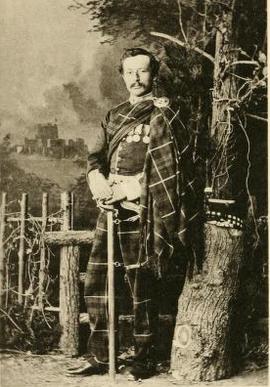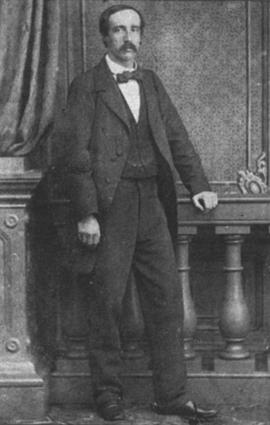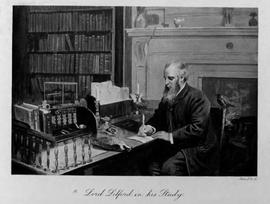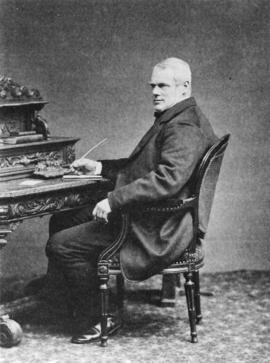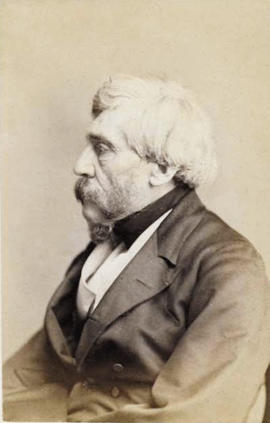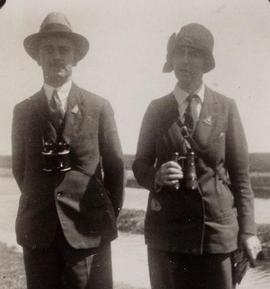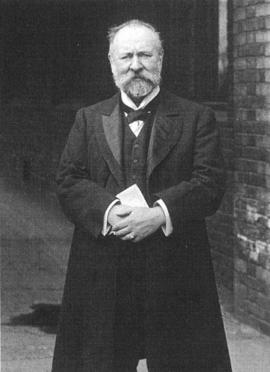Leonard Howard Loyd Irby was a British ornithologist and army officer. He specialised in the study of birds in southern Iberia
August von Pelzeln was an Austrian ornithologist. He studied at the University of Vienna, later working as an assistant under helminthologist Karl Moriz Diesing in the Hof-Naturalien-Cabinet from 1851. In 1857 he acquired curatorial duties formerly held by Johann Jakob Heckel, and subsequently became in charge of the bird (1857) and mammal (1869) collections. He worked on the birds collected by Johann Natterer in Brazil (343 species)
Thomas Littleton Powys, 4th Baron Lilford was a British aristocrat and ornithologist. He was one of the eight founders of the British Ornithologists' Union in 1858, and its president from 1867 until his death. He was also the first President of the Northamptonshire Natural History Society. He travelled widely, especially around the Mediterranean and his extensive collection of birds was maintained in the grounds of Lilford Hall. Until 1891, his aviaries featured birds from around the globe, including rheas, kiwis, Pink-headed ducks and a pair of free-flying Bearded vultures. He was responsible for the introduction of the Little owl into England in the 1880s. He wrote about birds including Notes on the Birds of Northamptonshire and Neighbourhood (1895) and Coloured Figures of the Birds of the British Islands, which was completed by Osbert Salvin after his death. A species of European lizard, Podarcis lilfordi, is named in his honour
Employed by the Edward Grey Institute of Field Ornithology
John Henry Gurney was an English banker, amateur ornithologist and Liberal Party politician of the Gurney family. Gurney published a number of articles in The Zoologist on the birds of Norfolk. He also commenced a collection of birds of prey. In 1864 he published Part I. of his Descriptive Catalogue of this collection, and in 1872 he edited The Birds of Damara Land (Damaraland, South-West Africa) from the notes of his friend Charles John Andersson. Between 1875 and 1882 he produced a series of notes in The Ibis on the first volume of the Catalogue of Birds in the British Museum, and in 1884 brought out a List of Diurnal Birds of Prey, with References and Annotations. The archives of Cambridge University Museum of Zoology contains five volumes of correspondence between Alfred Newton and Gurney, who was a founding member of the Norfolk Naturalists Trust
Colonel William Henry Sykes was an English naturalist who served with the British military in India and was specifically known for his work with the Indian Army as a politician, Indologist and ornithologist. He was a founder of the Royal Statistical Society
Sir Arthur Landsborough Thomson was a Scottish medical researcher, amateur ornithologist, ornithological author and expert on bird migration. He was President of the British Ornithologists' Union from 1848-1955. He was President of the Zoological Society of London 1946-1950. He was Chairman of the British Trust for Ornithology 1941-1947 and won the Trust's Bernard Tucker Medal in 1957. In 1959 he was awarded the Godman-Salvin Medal.
Richard Bowdler Sharpe was an English zoologist and ornithologist who worked as curator of the bird collection at the British Museum of Natural History. In the course of his career he published several monographs on bird groups and produced a multi-volume catalogue of the specimens in the collection of the museum. He described many new species of bird and also has had species named in his honour by other ornithologists including Sharpe's longclaw (macronyx sharpei) and Sharpe's starling (poeopters sharpii). He was Clerk in Charge of the Library at the Zoological Society of London 1867-1872. Sharpe founded the British Ornithologists' Club in 1882 and edited its bulletin. He was a Fellow of the Zoological Society of London and the Linnean Society
John James Yealland was a British aviculturalist and ornithologist. He helped Sir Peter Scott found the Wildfowl Trust. He accompanied Gerald Durrell on his first animal collecting expedition to the British Cameroon in 1947-1948. He went to become the Curator of Birds at London Zoo
